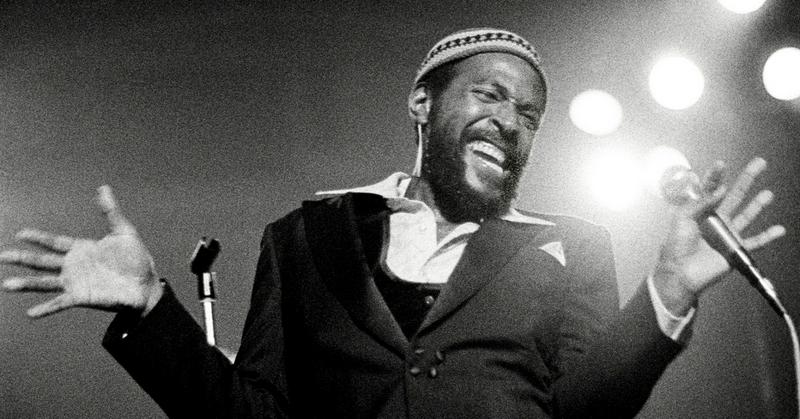Marvin Gaye's 'Got To Give It Up:' Story And Facts About The Disco Hit He Didn't Want To Make
By | June 20, 2020

When Marvin Gaye recorded "Got To Give It Up," he was joining the club -- the club of disco bandwagon-jumpers. Disco was so huge in the late '70s that labels, and many artists, wanted that big-selling disco hit. The Rolling Stones' "Miss You" is disco, the title track from Pink Floyd's The Wall is disco, The Clash's "Magnificent Seven" is disco. And Marvin Gaye, titan of soul music, got in line -- reluctantly, and even subversively. He set out to make a song that would be a parody of disco, or disco taken to its absurd conclusion. He ended up creating a chart-topping single that is one of the greatest disco tunes of all time.

Marvin Gaye, the "Prince of Motown," was a purveyor of baby-making music the world over. He'd recorded dance (or danceable) hits early in his career, such as "Ain't That Peculiar" and "It Takes Two," but in the '70s, he was all about smooth and slow, with hits like "What's Going On" and "Let's Get It On."
"Got To Give It Up" may not rank in the top five of most memorable Marvin Gaye songs -- partly because it isn't identifiably a Marvin Gaye song -- but it's a disco classic and evidence of Gaye's massive talent. “Got To Give It Up” started as a 12-minute song on the final side of his live double album Marvin Gaye Live at the London Palladium. Eventually, Gaye whittled it down to 4 minutes of funky chart-topping flavor that replaced "Dreams'' by Fleetwood Mac on Billboard’s Hot 100.
Producers Dreaming Of Gaye’s Disco Take

Amazingly, Gaye wanted nothing to do with disco. It was his producers, hungry to take in a share of that massive disco dance money that pushed Gaye to make his disco masterpiece. “Motown was screaming disco at me,” Gaye told Divided Soul biographer David Ritz. “Disco disco disco disco! I couldn’t be bothered. But I also had this problem.” That problem was that Gaye wanted Live At The London Palladium to be a double album -- but he didn’t have enough material to round out the record.
A Push From A Friend

To fill out that fourth side, Gaye and his drummer, Bugsy Wilcox, started tinkering with some sounds. For Gaye, the inspiration came from his wish to create a disco parody. Of course, when you’re as talented as Gaye was, a parody can turn into an outright hit. Even if Marvin was just making fun of disco, his producer Art Stewart knew its potential: “The groove was so bad. I knew we had a number one record from jump street. But Marvin kinda forgot about it.”
“Got To Give It Up” or “Dancing Lady”

To push the Prince, Stewart delivered a track on Christmas Day ‘76 to help the artist to finish it. Even more serendipitously, “Got To Give It Up” never would have happened if not for Motown’s decision to give the disco-themed “Love Hangover” to Diana Ross as opposed to Gaye. If they had gone the other way, the groovy “Got To Give It Up” may never have come to fruition.
To add more what-ifs to Marvin Gaye’s disco gem, the song was originally titled “Dancing Lady” as an answer to Johnnie Taylor’s “Disco Lady.” Gaye added voices in the background to create a casual festive atmosphere. For some of the creative background sounds, Gaye banged on a half-filled grapefruit juice bottle and percussionist Jack Ashford made music from a homemade instrument he dubbed the “Hotel Sheet.” Essentially, he shook a piece of polystyrene to produce a wobbly sound.
Long Pop Culture Legs

While “Got To Give It Up” isn’t vintage Marvin Gaye, the funky sound continued long after Gaye tragically died. The song appears in Boogie Nights, Practical Magic, Summer Of Sam, and Charlie's Angels. However, the most famous contemporary use of “Got To Give It Up” came when Robin Thicke and Pharrell Williams had a hit with "Blurred Lines," which some listeners thought sounded a bit like "Got To Give It Up." After Gaye’s family sued, Thicke and Williams were forced to pay $7 million to Gaye’s estate for copyright infringement.
